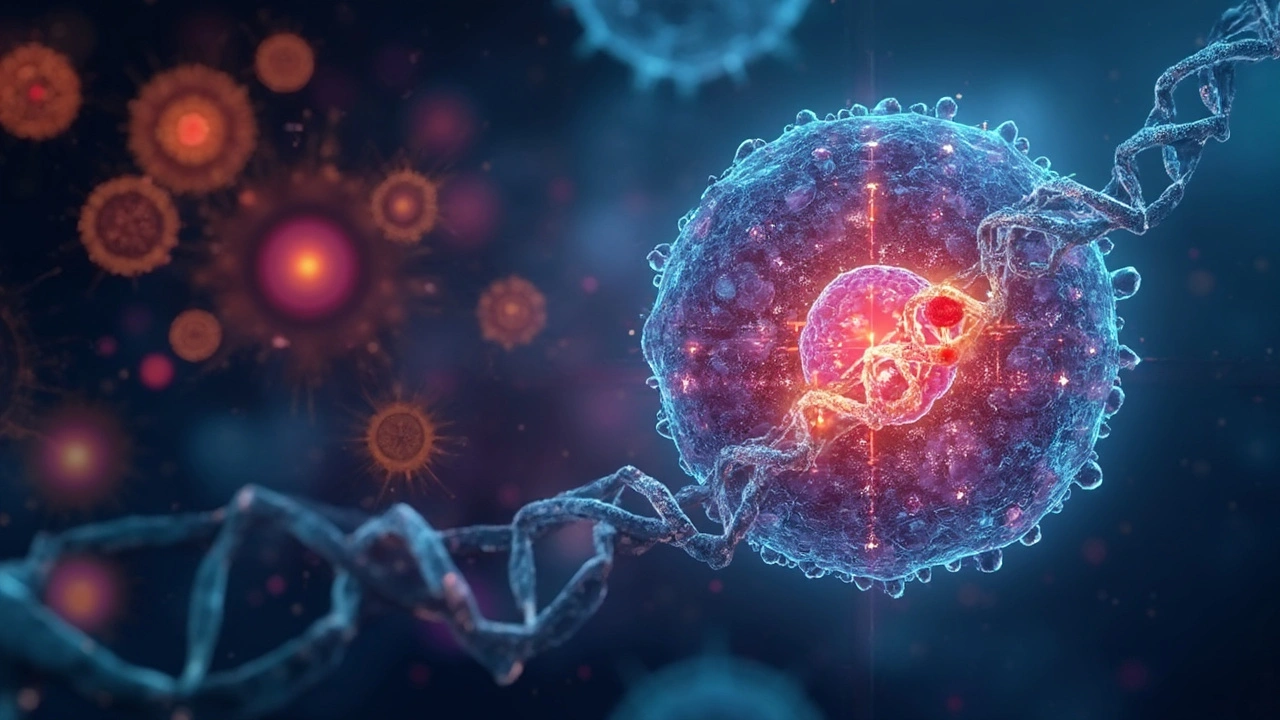Oncogenes: How They Cause Cancer and What That Means for You
One small change in a gene can give a cell the green light to grow out of control. That’s the basic idea behind oncogenes. If you want to understand how many cancers start and why some drugs work for certain tumors, this is the place to start.
What an oncogene is — in plain language
Think of a proto-oncogene as a gas pedal for normal cell growth. When that gene is healthy, it helps cells divide when needed. An oncogene is a proto-oncogene that’s been altered so the pedal is stuck down. The cell keeps dividing even when it shouldn’t. Changes that create oncogenes can be tiny (one letter swapped in the DNA) or big (extra copies of the gene or a gene moved next to a new regulator).
Common ways proto-oncogenes become oncogenes:
- Point mutations — a single DNA change that makes a protein always active (example: some RAS mutations).
- Gene amplification — the cell makes many extra copies of a growth gene (example: MYC amplification).
- Chromosomal translocation — two genes fuse or one gene ends up next to a new control switch (example: BCR-ABL in chronic myeloid leukemia).
- Viral insertion — some viruses can insert DNA and activate nearby growth genes.
Why oncogenes matter for diagnosis and treatment
Oncogenes are not just a science fact — they change how doctors treat cancer. If a tumor has a specific oncogene, there are often drugs that target the abnormal protein it makes. For example, tumors with BCR-ABL respond to imatinib, and HER2-positive breast cancers respond to trastuzumab. That’s the core of precision medicine: pick a drug that targets the tumor’s exact weak spot.
How do doctors find these changes? Tumor testing has gotten simpler and faster. Labs use panels or next-generation sequencing (NGS) to look for oncogene mutations, fusions, and amplifications. If you or a loved one get a cancer diagnosis, asking about molecular testing is a practical step. It can open doors to approved targeted drugs or clinical trials.
Not all oncogenes are inherited. Most are somatic — meaning they happen during life in a specific tissue. Still, a few inherited changes that affect growth genes (for example, RET mutations) can raise cancer risk. If you have a strong family history of cancer, genetic counseling can help sort this out.
Practical takeaways: ask your oncology team about tumor sequencing, consider targeted therapy when an actionable oncogene is found, and look into clinical trials if standard options are limited. If you want more easy guides on cancer drugs, testing, and safety, GenMedicare has plain-language articles to help you understand choices and next steps.
Key Genetic Mutations Behind Aggressive Cancer Growth: Oncogenes & Tumor Suppressors Explained
Dig into the real drivers of aggressive cancers: the genetic mutations that push cells to multiply and resist control. This article lays out the major oncogenes and tumor suppressor genes making it happen, their deadly dance, and how you can actually spot and use this info. Covering hard facts with a practical lens, it tackles both the shocking speed of tumor growth and how doctors chase down these genetic clues. If you want to understand why some cancers explode while others simmer, all roads lead to your DNA.
View more
